Rainbows had escorted us onto the river, rainbows that touched down in the sand just yards away from where we were putting our canoes into the Colorado River. In the couple of hours since then, spitting rain and wind had taken turns in our faces, and the late afternoon sun had long since disappeared behind clouds.
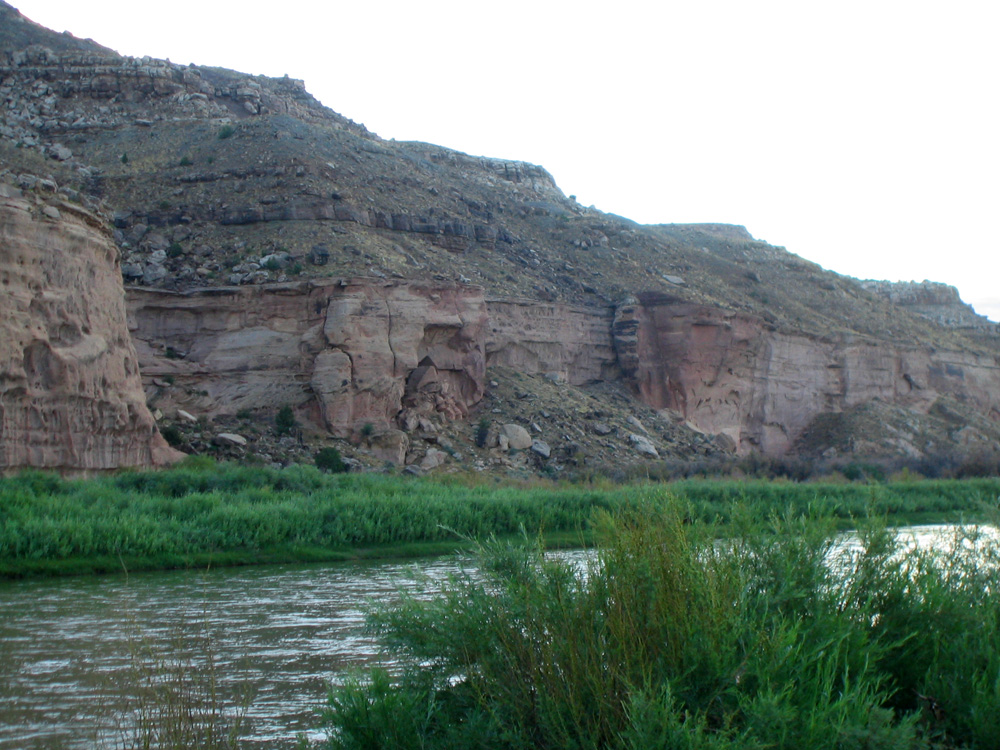 It was my first-ever canoeing river trip (how did I get to be this old before going on one?!), and I wasn’t feeling great to start with, a humdinger of a cold stuffing my head and dulling my brain. But I needed a break from writing, needed to try sleeping outdoors even if having a cold meant no sleep at all. Might as well be miserable under stars.
It was my first-ever canoeing river trip (how did I get to be this old before going on one?!), and I wasn’t feeling great to start with, a humdinger of a cold stuffing my head and dulling my brain. But I needed a break from writing, needed to try sleeping outdoors even if having a cold meant no sleep at all. Might as well be miserable under stars.
We’d just finished hauling gear up from the boats in the twilight when—wham!—the wind and rain slammed into us. The four of us took shelter under a makeshift tarp, three women holding up its edges with both arms while the fourth gamely started the camp stove and tried to begin dinner.
Sheets of rain slashed into us, whipping the tarp. Soon gullies and then puddles of water sloshed at our feet. The gear we’d shoved under the tiny camp table didn’t have a hope of staying dry. Rain gushed and pounded as thunder roared, over and over, unrelenting. Flashes of lightning traveled closer and closer, thunder catching up to it, until finally there was no space between light and sound. A flash of too-bright light, an explosion and roar in the same moment. Someone shrieked. Someone else laughed maniacally.
I stood there too stunned to say or do anything but hold my sopping arms to the tarp, rolling off the water that pooled in its folds. This was one of the worst storms I’d ever seen, let alone been out in. Dinner plans abandoned, we huddled together, our four headlamps feeble against the flashing sky.
Another flash and instant crash, and we shifted uncomfortably. Nothing to do now but wait out this storm and hope. I kept reminding myself how beautiful the next morning would be—if we got to see it.
It felt like forever but must have been less than an hour until the thunder at last rolled into the distance, the lightning flashed farther and farther away. Still the rain pounded. But the wind let up, and the camp stove was again lit and dinner prepared. Two people headed down to the boats and bailed out two inches of water.
Rain was still pattering when we lugged out our tents and set them up in the pitch-dark, pulled off our sopping clothes and muddy sandals, and crawled in for the night. By some miracle, my sleeping bag was bone dry.
Ahhh! Is there any sound sweeter than the pat-pat-pat of raindrops on the roof of a dry tent? I fell into a deep sleep that lasted the whole night.
The next morning was indeed beautiful:
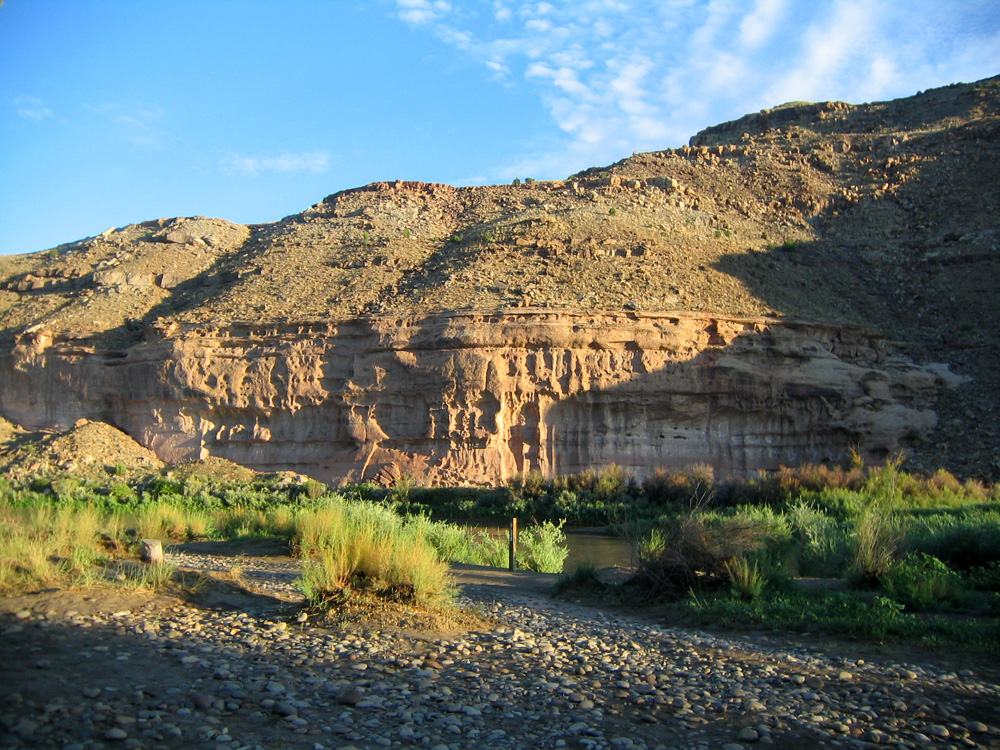 We floated down the river, stopping once on a beach of silky gray sand to gorge ourselves on snacks and build drip-castles. Here is our fearless leader, Lauren Bond Kovsky, whose passion in life is to connect people with nature:
We floated down the river, stopping once on a beach of silky gray sand to gorge ourselves on snacks and build drip-castles. Here is our fearless leader, Lauren Bond Kovsky, whose passion in life is to connect people with nature:
By sundown we’d found another stellar campsite beside the river, where the cliffs glowed golden red:
Mosquitoes bit as we cleaned up dinner, but after dark the moonless sky was filled with a million-billion suns twinkling overhead.
The next day we hiked up a side canyon, where I stopped to admire the pattern of creek water rippling in sand. The order that emerges through flowing water is an example of self-organizing in nature. Think of the complex life of a beehive or the precision of a school of fish in motion. Each molecule, each member of the whole, makes its moment-to-moment decisions about where to flow or which direction to turn or how to find the trove of pollen. Order and pattern are built through a myriad of small-scale actions within the whole.
More red rocks, my favorite rocks in the world:
 The tangle of juniper under which I sat, alone, to appreciate the utter stillness of the desert at midday:
The tangle of juniper under which I sat, alone, to appreciate the utter stillness of the desert at midday:
Back on the river, we floated into a region of black rocks, where the river is said to be 85 feet deep. The black and red together are stunning:
I spent the better part of the afternoon enjoying the water up close:
That night we battled even more mosquitoes for our dinner. They attacked by the dozens, until we dived into our tents for a moment of sanity. But the campsite was special in other ways: animal tracks including bear, skunk, river otter, bobcat, and beaver. Here are the bear tracks:
I was awake a long time in the night watching the stars and enjoying the frog who harrumphed in a booming bass voice now and then. In the morning, printed in the silky fine sand, frog tracks an inch in diameter circled my tent:
The river trip had been wonderful, terrifying, soothing, alarming—everything rolled into one. Oh, and that cold? I sniffled my way through the weekend, washing out my hanky often in the river and most of the time forgetting I felt sick.
On the drive home, this carload of word lovers played word games and traded nature poetry—some Mary Oliver, some Gerard Manley Hopkins. I was reminded of the last lines of one of my favorite Hopkins poems, “Inversnaid,” about a little waterfall that foams its way down toward the lake like a galloping stallion. The poem ends with a fitting tribute to a river weekend:
What would the world be, once bereft
Of wet and of wildness? Let them be left,
O let them be left, wildness and wet;
Long live the weeds and the wilderness yet.
For more information:
On self-organizing in nature:
- Stuart A. Kauffman, The Origins of Order: Self-Organization and Selection in Nature (Oxford: Oxford Univ. Press, 1993), and At Home in the Universe: The Search for Laws of Self-Organization and Complexity (Oxford: Oxford Univ. Press, 1995).
- Scott Camazine, “Patterns in Nature,” Natural History (June 2003), 34–41; also his book: Scott Camazine et al., Self-Organization in Biological Systems (Princeton: Princeton Univ. Press, 2002).
And here is Lauren’s blog post about the wham-slam-banging storm.
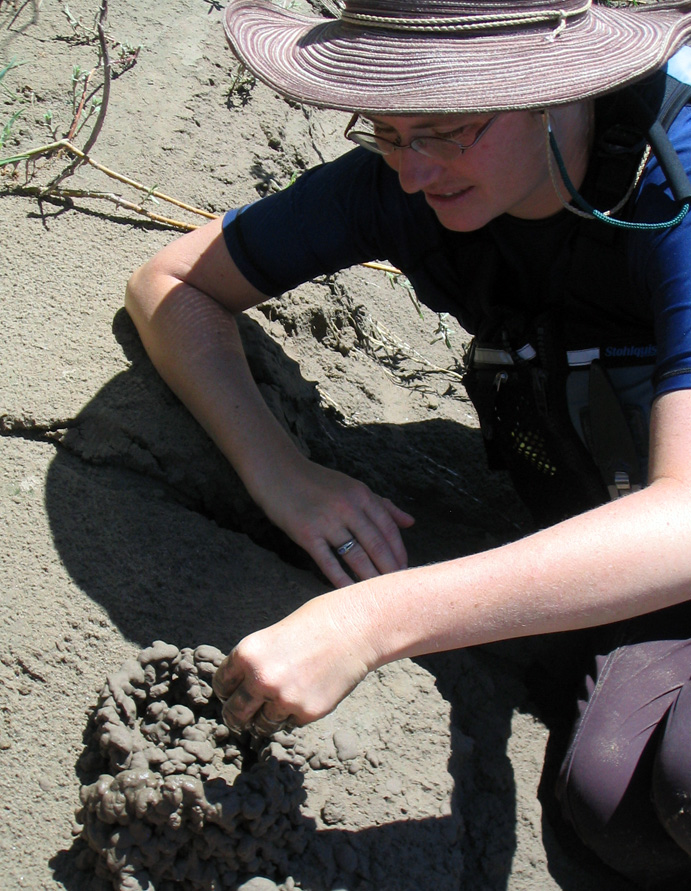
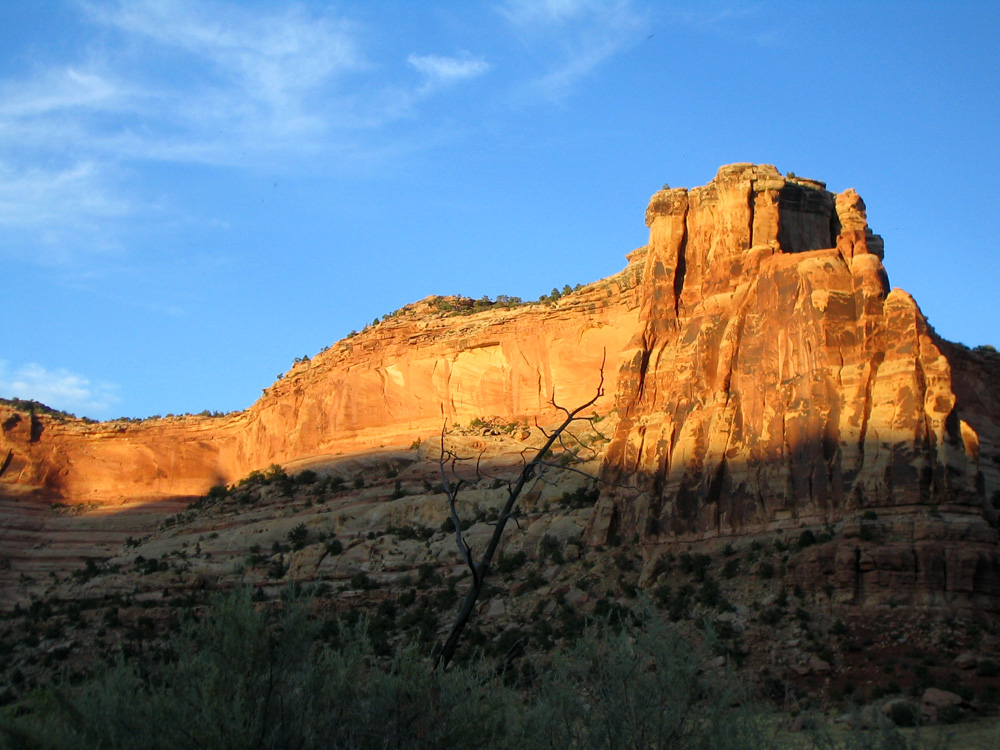
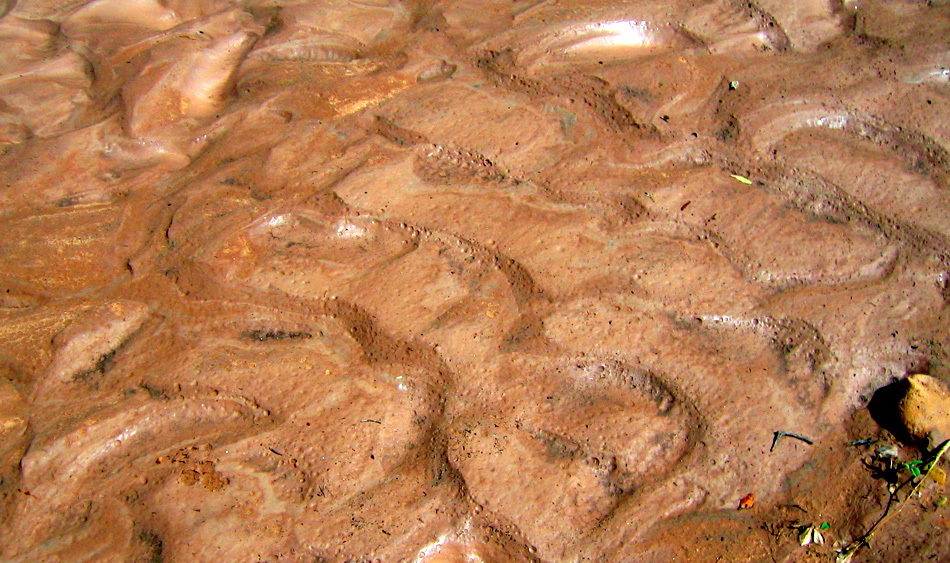

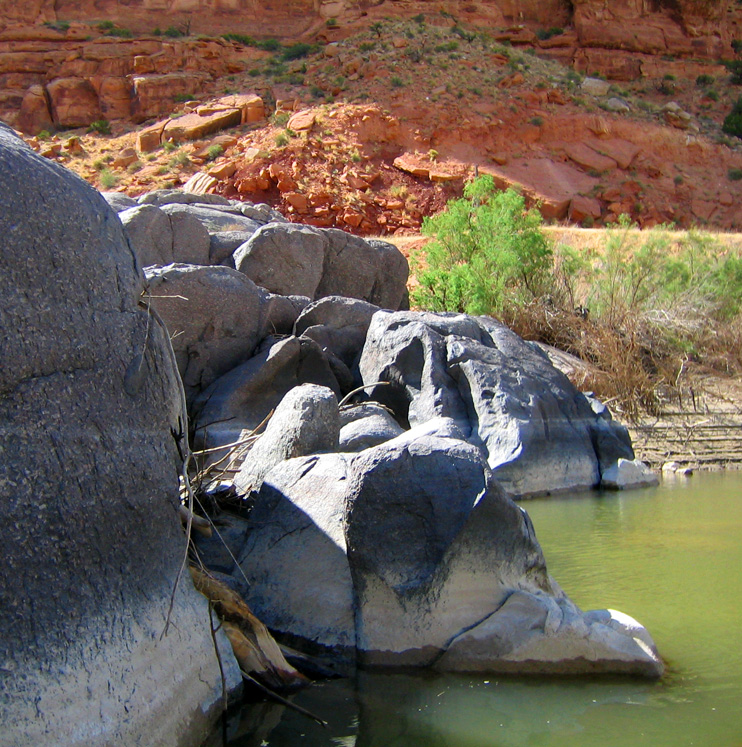

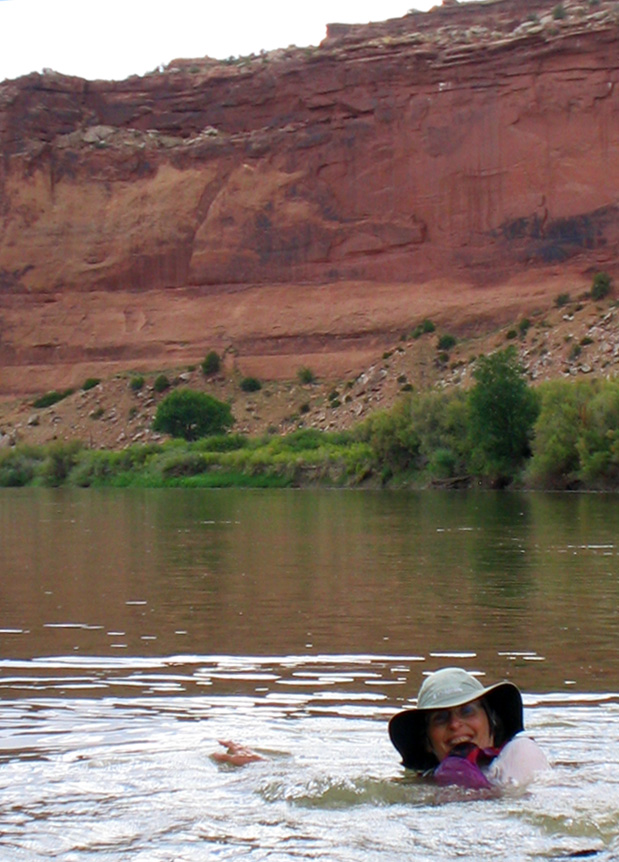
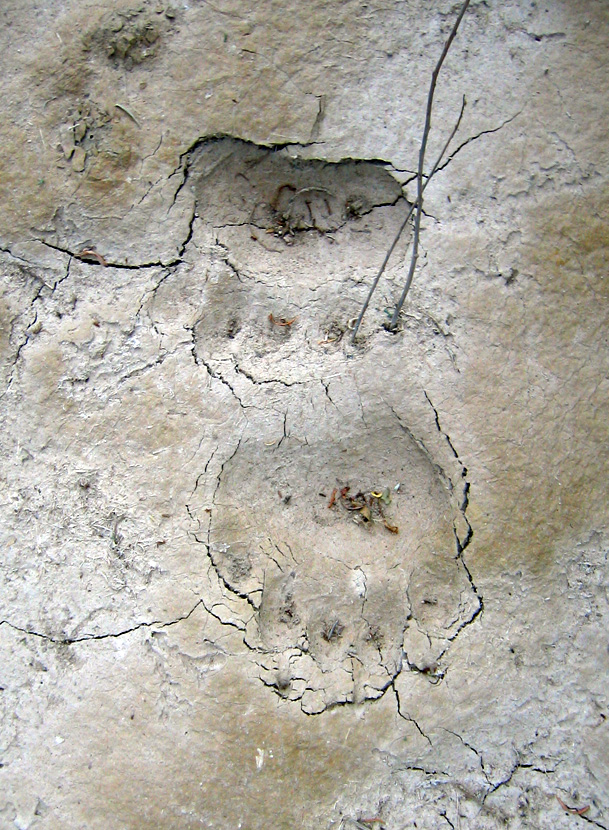
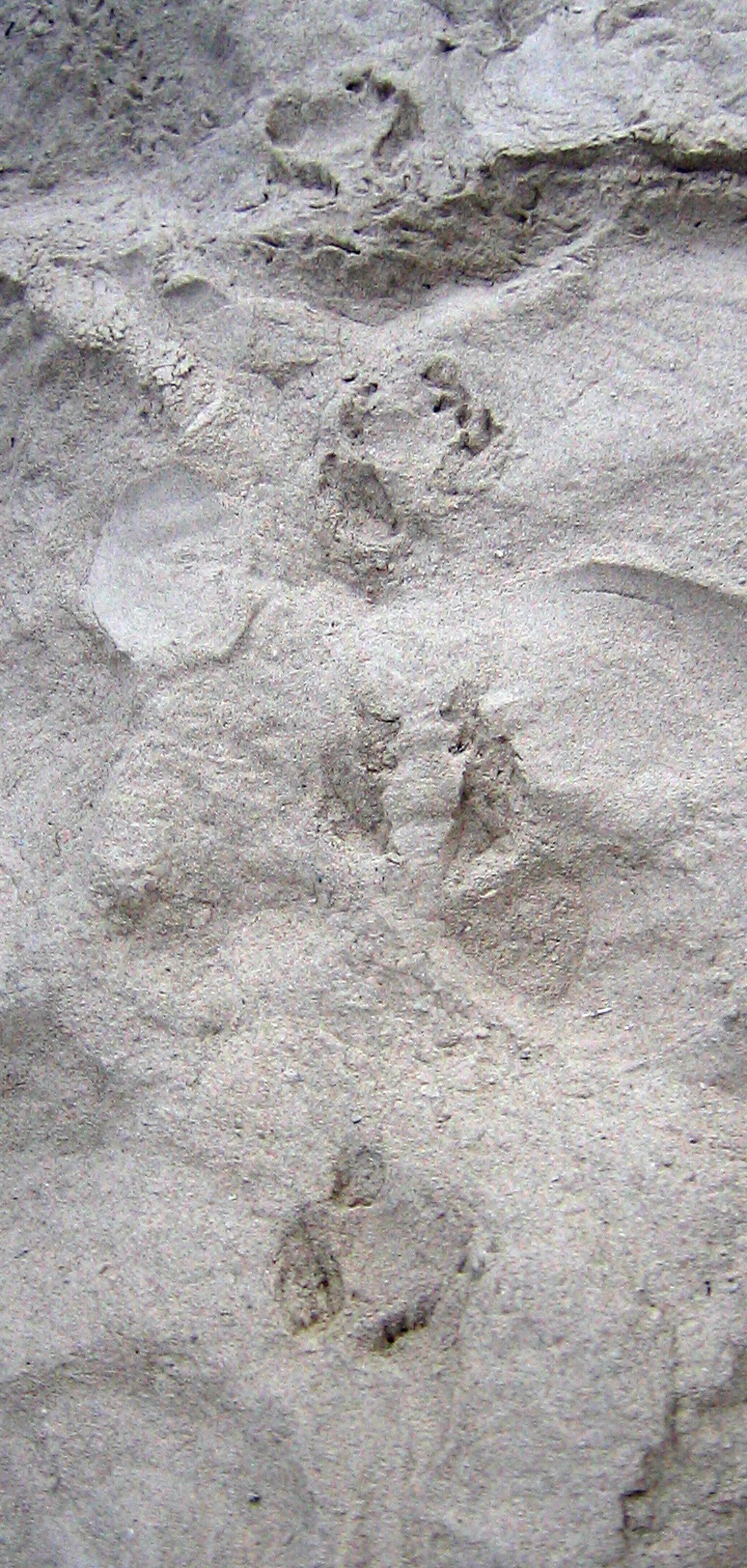
Sounds like a wonderful trip–lightning, thunder, red and black rocks and all.
It was–everything rolled into one. Enough adventure to tingle the spine and enough lazy hours to bask in sun and water.
Lovely. I hope you know about Barry Lopez who is a fabulous nature writer. Put the Big Horn canyon on yr list for a future trip. Friends just kayaked there and it was lovely. Will email you their photos. Glad you are enjoying Colorado so much.
Midge
Thanks, Midge, for stopping by! Yes, Barry Lopez is one of our best nature writers, isn’t he? The Big Horn canyon looks splendid! Since the water is controlled by a dam, I take it there is little current? I’ve never boated on a reservoir so am wondering if there is any current.
What a fantastic description of our trip!! Makes me feel like I’m there all over again 🙂 you are such a brilliant writer 🙂 I can’t wait to have a whole book of yours to read!!!!
Aww, shucks, Lauren. 🙂 You’re a fabulous trip planner! I was grateful to have someone else get the food together and strap down the gear—not to mention clean out the groover at the end!